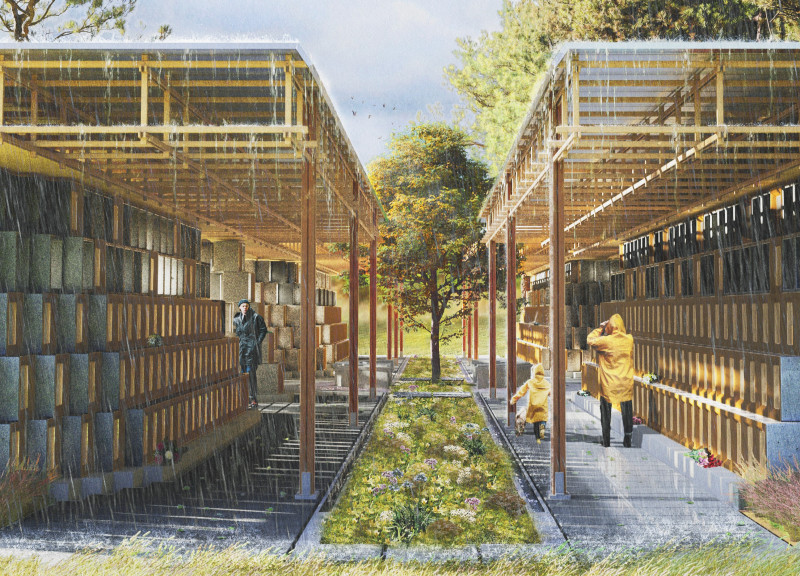5 key facts about this project
Caur Gaismu is located in Latvia and thoughtfully intertwines the concepts of life, death, and nature within a memorial space. The guiding principle recognizes death as a return to nature, allowing visitors to reflect and find comfort. Central to the design is a courtyard, which is encircled by modular niches for urns, facilitating both community gathering and personal remembrance.
Design Concept
The layout features a central circular courtyard that serves as a communal area for contemplation and mourning. Surrounding this courtyard are five rows of modular niches, designed to accommodate a total of 860 single-urn placements. Accessibility is a priority, with the lower rows specifically created for wheelchair users, ensuring that everyone can engage meaningfully with the space.
Natural Integration
Caur Gaismu emphasizes the relationship between architectural spaces and natural elements. Perforated walls allow soft sunlight to filter into the niches, creating an inviting atmosphere for reflection. Additionally, features that manage rainwater are carefully incorporated, directing rainfall to a basin at the courtyard’s edge, which deepens the connection between the building and its environment.
Material and Sustainability
The niches are constructed from durable materials that emphasize longevity. Concrete forms the structural base, while wood-framed glass caps enhance visibility and lightness. This combination supports a lifespan of over 50 years, aligning with a commitment to sustainability and reducing the need for frequent maintenance.
Symbolic Elements
At the heart of the design stands the Latvian Kaive Oak. This tree symbolizes continuity and life, positioned prominently in the courtyard. As visitors enter the space, the oak serves as a living monument, encapsulating the connection between nature and memory. It reflects the lasting bond between the past and present, reinforcing the memorial’s purpose in a meaningful way.






















































